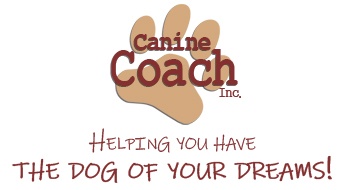Train your Dog to Stop Jumping
Dogs jump up on people for two reasons. Jumping begins because it is s normal greeting behavior among dogs, especially for puppies greeting older “pack members”. It continues because it works. Dogs always get attention for jumping.
In some cases, especially with smaller dogs, people will actually reward the puppy by petting him when he jumps, because he’s easier to reach that way, and it’s “no big deal.” However, it becomes a big deal when the puppy has muddy paws or you are wearing nice clothes. How confusing for a puppy to be rewarded sometimes and punished at other times for exactly the same behavior.
Bigger dogs usually receive negative attention for jumping, ranging from a loud “NO” or “OFF” to a hard shove or a knee in the chest. For some dogs any attention, whether verbal or physical, is perceived as positive. More sensitive dogs usually don’t understand why they are being punished for simply wanting to say, “Hi.” The end result is either a rowdy dog who gets more excited by what he perceives as the shoving game, or a sensitive dog that, over time, becomes afraid of greeting people at all.
While retraining a jumping dog it is important to use management techniques to prevent the dog from practicing the behavior you are trying to change. If your dog is jumping on people in your home, always have him on leash when visitors arrive. Don’t allow him to greet the visitors until they are seated and your dog has calmed down. You can then enlist their help in the retraining process. If your dog jumps on people in public, have him on leash, and don’t allow him to get close enough to make contact. Later we will discuss how to set up training opportunities to teach your dog proper greeting behaviors both at home and in public.
So, solving a jumping problem (or better yet, preventing it) involves two steps. First we must remove the reward, making sure that the dog gets no attention for jumping up. Whenever your dog does jump up on you, turn your back to him without making eye contact or saying anything. When he gets off, and has all four feet on the floor, you can turn back around and resume what you were doing. If his feet stay on the floor for a minute or more, quietly praise and pet him, so he sees that four on the floor gets your attention, jumping does not. If he is jumping on you while you are sitting down, simply stand up and let him fall off, then reseat yourself. He should soon figure out that jumping no longer works to get your attention, although a very persistent jumper may become even more persistent for a while before the message sinks in.
But removing the reward is only half of the solution. We must also teach the dog another way to greet us, and to get our attention, if we want to permanently stop the dog from jumping up. Teaching a dog to sit for attention is a great option. But while telling your dog to sit each time someone approaches seems like a good method, some dogs fail to internalize this lesson. They will sit, but only when you tell them to, making no association what so ever between the approach of the person and his sitting. Without you giving the sit command, they often revert to their old jumping behavior, especially if an unknowing victim inadvertently rewards the dog when he jumps. For this sit on command method to work, you must always be present, and on guard, to control your dog’s greetings.
A better technique is to simply reward your dog any time he offers a sit without being told. Eventually, he will begin to offer a sit as a way to get attention, the sit will become his default behavior, and sitting will naturally replace jumping as his new greeting behavior. Continue to reward when he offers a sit to anyone he approaches, and he will generalize this new greeting behavior to visitors in your home and friends you meet on the street.
